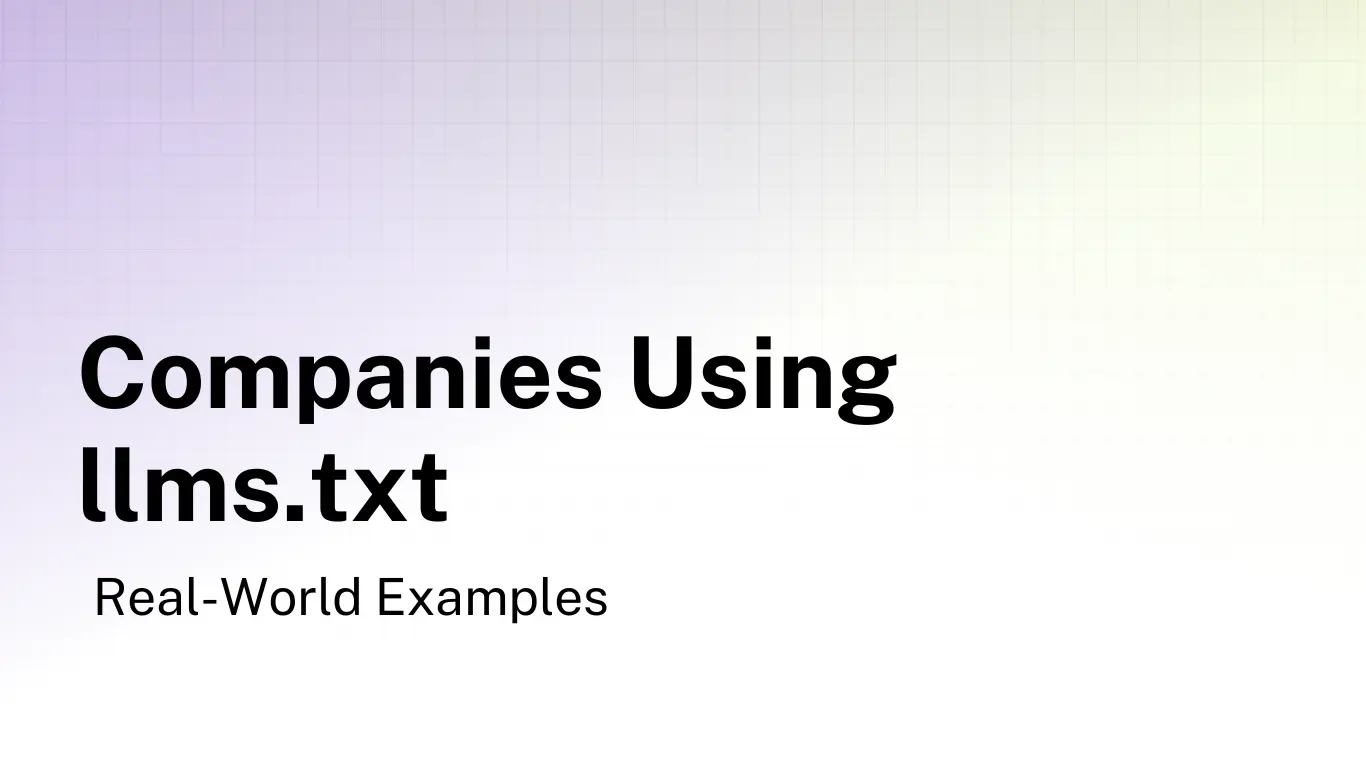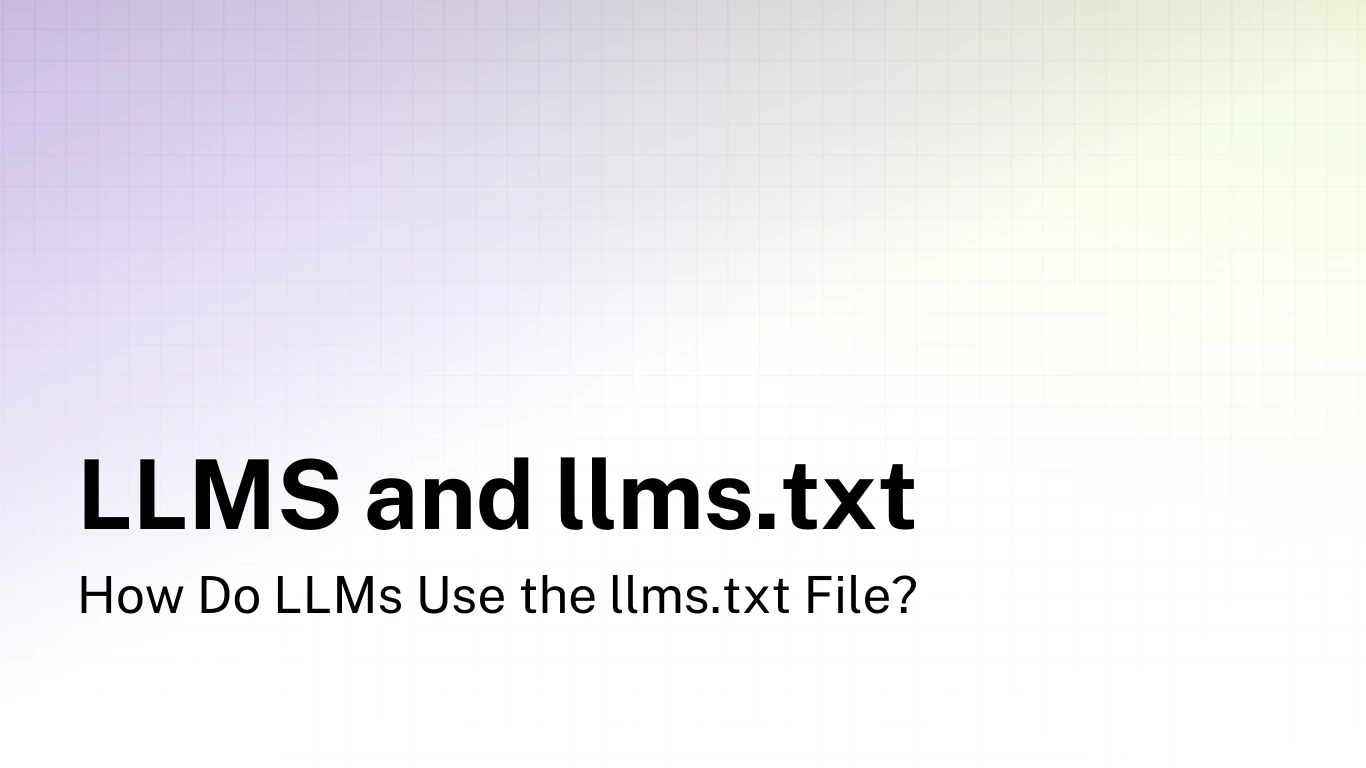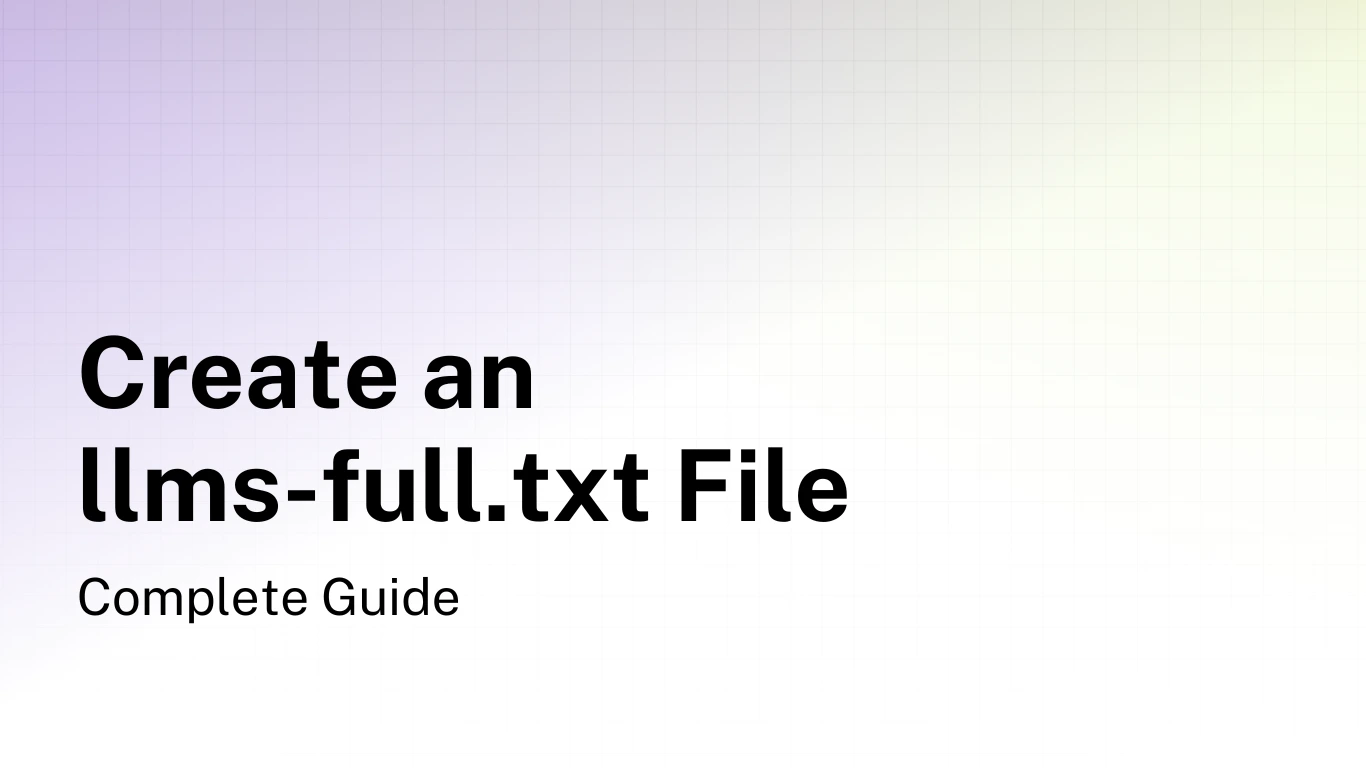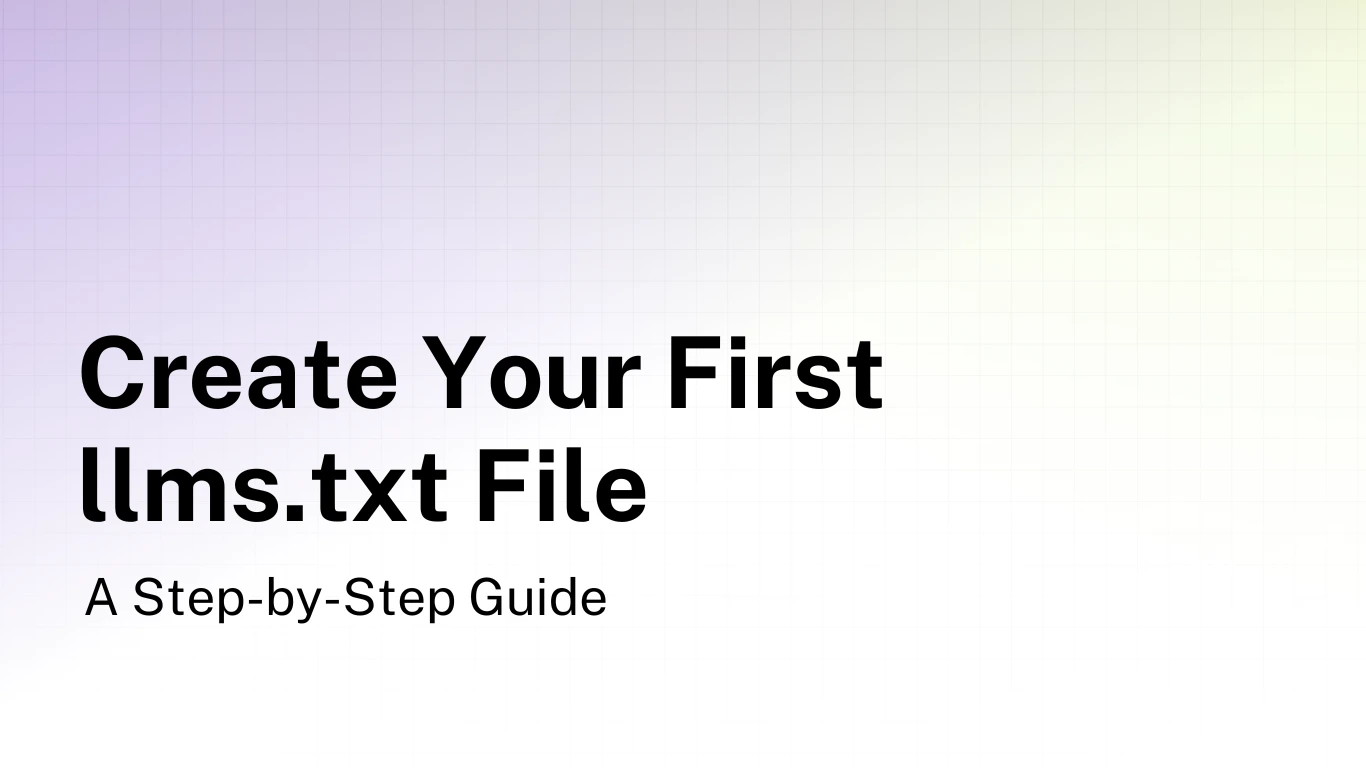7 Top Companies Using llms.txt: Real-World Implementation Examples

Since its introduction in late 2024, the llms.txt standard has been rapidly adopted by forward-thinking companies looking to make their content more accessible to AI systems. What started as a proposal by Jeremy Howard has quickly evolved into a practical standard embraced by some of the biggest names in tech.
But what does llms.txt look like in the wild? How are real companies structuring their files, and what can we learn from their implementations?
If you're new to the standard, check out our guide on what llms.txt files are before diving into these examples.
In this article, I'll examine seven notable companies that have successfully implemented llms.txt files on their websites. By studying these examples, you'll gain valuable insights for creating your own effective llms.txt implementation.
Zapier
View Zapier's llms.txt | View Zapier's llms-full.txt
Zapier, the popular automation platform connecting over 5,000 apps, has implemented both llms.txt and llms-full.txt files in a highly detailed, API-oriented approach.
Zapier's llms.txt is centered around documentation for their AI Actions API, providing a well-organized list of endpoints. For example:
# Zapier
## Docs
- [Get Action Details](https://docs.zapier.com/ai-actions/api-reference/actions/get-action-details.md): Get details of a specific action, including its needs, gives, and a sample of the action.
- [Get Prefill Choices](https://docs.zapier.com/ai-actions/api-reference/actions/get-prefill-choices.md): Get prefill choices for an app's prefill.
- [Search Actions](https://docs.zapier.com/ai-actions/api-reference/actions/search-actions.md): Search for Zapier actions by app, ordered by relevancy.
What's notable about Zapier's implementation:
- API-reference focused: Their llms.txt is structured as a comprehensive list of API endpoints, each with a clear description of its functionality.
- Consistent formatting: Each link follows the same pattern of "Name: Description" making it easy for both humans and AI models to parse.
- Hierarchical organization: The content is organized under a single main "Docs" section, with each API endpoint listed as a bullet point.
The llms-full.txt file follows a similar structure but includes the full content of each documentation page, providing complete information about endpoints, parameters, and example responses.
Stripe
Stripe, the payments infrastructure company, has implemented a particularly thorough llms.txt file that showcases an effective product-categorized approach:
# Stripe Documentation
## Docs
- [Testing](https://docs.stripe.com/testing.md): Simulate payments to test your integration.
- [API Reference](https://docs.stripe.com/api.md)
- [Receive payouts](https://docs.stripe.com/payouts.md): Set up your bank account to receive payouts.
## Checkout
Build a low-code payment form and embed it on your site or host it on Stripe. Checkout creates a customizable form for collecting payments...
- [Stripe Checkout](https://docs.stripe.com/payments/checkout.md): Build a low-code payment form and embed it on your site or host it on Stripe.
- [Stripe-hosted page](https://docs.stripe.com/checkout/quickstart.md)
What makes Stripe's approach noteworthy:
- Product-categorized organization: Content is divided into clear product sections like "Checkout," "Payments," "Link," and "Billing," making it easy to find specific information.
- Concise section introductions: Each product section begins with a brief description explaining what the product does before listing relevant links.
- Comprehensive coverage: The file covers Stripe's entire product ecosystem, from core payment processing to specialized offerings like Capital and Climate.
Stripe's llms.txt shows the value of organizing content by product categories, particularly for companies with diverse product offerings.
Cloudflare
View Cloudflare's llms.txt | View Cloudflare's llms-full.txt
Cloudflare has one of the most extensive llms.txt implementations, reflecting their broad range of developer services:
# Cloudflare Developer Documentation
Easily build and deploy full-stack applications everywhere,
thanks to integrated compute, storage, and networking.
## Agents
- [Build Agents on Cloudflare](https://developers.cloudflare.com/agents/)
- [Agents API](https://developers.cloudflare.com/agents/api-reference/agents-api/)
- [Browse the web](https://developers.cloudflare.com/agents/api-reference/browse-the-web/)
What makes Cloudflare's implementation stand out:
- Service-oriented structure: The file is organized by Cloudflare's various services (Agents, AI Gateway, Browser Rendering, etc.), making it easy to find specific documentation.
- Clear introduction: The file begins with a concise description of what Cloudflare offers developers.
- Depth of content: For each service, they provide multiple links covering different aspects like API references, tutorials, and examples.
- Complete documentation: Their llms-full.txt file is particularly comprehensive, containing the full content of all documentation pages, including code examples, diagrams, and step-by-step guides.
Cloudflare's approach demonstrates how to effectively organize extensive documentation for a platform with many different services and products.
Youform
Youform, a form-building service, takes a different approach with their llms.txt implementation, focusing on blog content rather than API documentation:
# About
Name: Youform
Description: The most affordable Typeform alternative
URL: https://youform.com/blog
# Navigation Menu
- Create free account: https://app.youform.com/register
- Go to Youform's website: https://youform.com
# Blog Posts
## Tally forms vs Youform
Author: Davis Baer
Published: 2025-02-17
URL: https://youform.com/blog/tally-forms-vs-youform-cm78l24ne001p1188wueqp8qx
What's interesting about Youform's approach:
- Blog-focused content: Unlike the API-heavy implementations of larger companies, Youform focuses on making their blog content accessible to AI systems.
- Clear metadata: Each blog post includes author, publication date, and full URL.
- Navigation links: The file includes direct links to core actions like creating an account.
- Concise company description: The file begins with basic information about what Youform does.
Youform's implementation shows that llms.txt can be valuable for smaller companies and content-focused sites, not just for complex API documentation.
Coinbase
Coinbase, the cryptocurrency exchange platform, has implemented a detailed llms.txt file for their Cloud Developer Platform documentation, focusing on SDK documentation with code examples:
# Comprehensive Coinbase Developer Platform (CDP) SDK Documentation in NodeJS
## Table of Contents
1. [Introduction](#introduction)
2. [Installation](#installation)
3. [SDK Configuration](#sdk-configuration)
4. [Wallet Management](#wallet-management)
...
## Introduction
The Coinbase Developer Platform (CDP) SDK provides a comprehensive set of tools for interacting with blockchain networks, managing wallets, and performing various crypto operations. This document serves as a detailed guide for developers looking to integrate the CDP SDK into their applications.
Noteworthy aspects of Coinbase's implementation:
- SDK documentation focus: Their file is structured as comprehensive documentation for their NodeJS SDK.
- Code-heavy examples: The file includes detailed code snippets and examples throughout.
- Table of contents: The file begins with a clear table of contents for easy navigation.
- Structured sections: Each major function of the SDK has its own section with explanations, parameters, and usage examples.
Coinbase demonstrates how to use llms.txt for technical developer documentation, particularly for SDKs and programming interfaces.
Tiptap
Tiptap, an open-source headless rich text editor for the web, offers a clean, well-organized llms.txt implementation:
#Tiptap
> Tiptap is the headless and extensible rich-text editor framework tailored to modern web and app development needs.
Core Benefits
- Build rich text editors similar to Notion within days
- Supports React, Next, Vue, Svelte, JavaScript and many more
- Robust, battle-tested open source framework under the MIT license
- With over 100 extensions highly adaptable
What makes Tiptap's implementation stand out:
- Clean, minimal structure: They've kept their structure simple and focused, with clear categories.
- Strong introduction: The file begins with a concise description and core benefits, immediately communicating value.
- Product-focused sections: Content is organized by products (Editor, Collaboration, Comments, etc.) and their documentation.
- Extension documentation: The file includes detailed links to documentation for all their editor extensions.
- Optional section: They effectively use the "Optional" section for less critical resources like changelog and community links.
Tiptap demonstrates a well-balanced approach that provides comprehensive information without overwhelming complexity.
Lessons from These Implementations
After examining these real-world examples, several patterns and best practices emerge:
Structure Matters
Each company has organized their content in a way that makes sense for their specific product or service:
- API-focused companies like Zapier organize by endpoints
- Product-diverse companies like Stripe organize by product categories
- Content-focused companies like Youform organize by content type
The best implementations create a logical hierarchy that helps AI systems understand the relationships between different pieces of content.
Clear Introductions Are Essential
Every effective example starts with a concise, informative summary that quickly explains what the company or product does:
- Tiptap begins with a clear value proposition and core benefits
- Cloudflare introduces their developer platform with a one-sentence description
- Youform provides a simple "most affordable Typeform alternative" description
This provides crucial context for AI systems trying to understand the documentation.
Format Consistency Improves Usability
Companies with the most effective implementations maintain consistent formatting:
- Zapier follows a consistent pattern for each API endpoint
- Stripe uses consistent section headings and link formats
- Tiptap structures all extension documentation in the same way
This consistency makes it easier for both AI systems and humans to parse and understand the content.
Optional Sections Are Valuable
Many implementations effectively use the "Optional" section to indicate less critical information:
- Tiptap places community resources and changelog in the Optional section
- Stripe includes specialized products like Climate in the Optional section
This helps AI systems prioritize the most important information when context windows are limited.
Creating Your Own Implementation
Based on these examples, here are some tips for creating your own llms.txt implementation:
- Match your structure to your content type: If you have API documentation, organize by endpoints; if you have multiple products, organize by product; if you have blog content, organize by topics or dates.
- Start with a clear introduction: Provide a concise description of what your company or product does to give AI systems immediate context.
- Be consistent in formatting: Use the same pattern for links, descriptions, and section headings throughout your file.
- Include descriptive link text: Links with descriptions help AI systems understand the content they point to without having to fetch each URL.
- Use the Optional section strategically: Place less critical information in the Optional section to help AI systems prioritize content when context space is limited.
Conclusion
The diverse approaches taken by Zapier, Stripe, Cloudflare, Youform, Coinbase, and Tiptap demonstrate the flexibility and utility of the llms.txt standard. Whether you're running a large enterprise with complex API documentation or a smaller service with focused content, llms.txt offers a way to make your content more accessible to AI systems.
As AI continues to play a larger role in how people discover and interact with information online, implementing standards like llms.txt will become increasingly important. By studying these real-world examples, you can create an implementation that works for your specific needs.
Ready to join these companies in making your content AI-friendly? Our free generator makes it easy to create llms.txt and llms-full.txt files for your website. Get started today!





